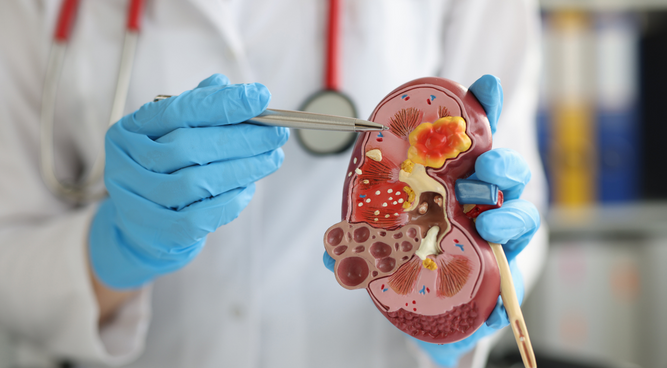Table of Contents
Introduction
Learn about the discomfort caused by kidney stone pain in clitorus area. Regarding kidney stones, most individuals are familiar with the excruciating pain they can trigger. However, there exists a less recognized facet of kidney stone-related discomfort that can specifically impact women – clitoral pain associated with kidney stones. In this extensive article, we will explore the origins, manifestations, and available treatment approaches for this infrequent yet troubling condition.
Understanding Kidney Stones
Before we dive into the specifics of clitoral pain caused by kidney stones, let’s first establish what kidney stones are. Kidney stones are solid formations comprised of minerals and salts that develop within your kidneys. These structures can exhibit a diverse range in size, spanning from being as tiny as a grain of sand to as sizable as a golf ball. As kidney stones grow in dimensions, they hold the capacity to elicit severe pain and give rise to various complications. (kidney stone pain in clitorus)
The Influence of Kidney Stones on the Clitorus
The primary source of the discomfort triggered by kidney stones is the hindrance of the natural urinary flow from the kidney to the bladder. (kidney stone pain in clitorus) Typically, the pain originates in the kidney or urinary tract. Nevertheless, in specific instances, this agony can extend to other regions of the body, encompassing the clitoris. This phenomenon is more frequently observed in women and can be intensely distressing.
Causes of Kidney Stone Pain in the Clitoris
Several factors can contribute to kidney stone pain radiating to the kidney stone pain in clitorus:
Nerve Pathways: The nerves that transmit pain signals from the urinary tract may cross paths with nerves leading to the clitoris, resulting in referred pain.
Nerve Sensitivity: Increased sensitivity of nerves in the pelvic region can make the clitoris more prone to experiencing pain referred from the kidney.
Inflammation: As the kidney stone moves along the urinary tract, it can cause inflammation and irritation, which can be felt in the clitoral region. (kidney stone pain in clitorus)
Symptoms of Kidney Stone Pain in the Clitoris

Patients experiencing kidney stone pain in clitorus often report the following symptoms:
Sharp, Stabbing Pain: The pain is typically sharp and stabbing, and it may come and go in waves.
Painful Urination: Discomfort during urination is common.
Painful Intercourse: The pain can also make sexual intercourse painful.
Clitoral Swelling: Some individuals may notice clitoral swelling or tenderness.
Frequent Urination: The urge to urinate frequently may be present.
Diagnosis
If you suspect the presence of kidney stone-related discomfort in the clitoral region, it’s imperative to promptly seek medical care. A healthcare provider will conduct a thorough physical examination, gather your medical history, and prescribe diagnostic tests like ultrasound or a CT scan to confirm the existence of kidney stones. (kidney stone pain in clitorus)
Treatment Options

The treatment for kidney stone pain in the clitoris is similar to that for kidney stones causing pain in other parts of the body. The approach may include:
Pain Control: Both non-prescription pain relievers and prescribed medications can aid in pain management.
Hydration: Drinking plenty of water can aid in passing the stone and reducing clitoral discomfort.
Medication: Your healthcare provider might prescribe medication to ease the tension in the urinary tract and facilitate the passage of the stone with greater ease.
Surgical Intervention: In more severe cases, surgical procedures like lithotripsy or ureteroscopy may become necessary to eliminate or disintegrate the kidney stone.
Preventive Measures: To avert future kidney stones and the associated clitoral pain, recommendations may include making lifestyle adjustments and dietary modifications. (kidney stone pain in clitorus)
Final Words:
While clitoral pain stemming from kidney stones is an unusual occurrence, it can elicit significant distress and unease for those enduring it. To effectively address this condition, it’s essential to possess a comprehensive grasp of its underlying origins, manifestations, and the array of therapeutic choices at your disposal. If you suspect that kidney stones might be the culprit behind your clitoral discomfort, it is strongly advised that you promptly seek medical attention for a precise diagnosis and a customized treatment plan. (kidney stone pain in clitorus) For more information please visit home.
Certainly! Here are four frequently asked questions (FAQs) related to the keyword “Kidney Stone Pain in Clitorus”:
1. What are the first signs of kidney stones in females?
The first signs of kidney stones in females are often similar to those in males and can include symptoms such as sudden and severe pain, typically in the lower back or side. Other common signs may include pain radiating to the lower abdomen and groin, blood in the urine (hematuria), frequent urination, and a strong urge to urinate. Nausea and vomiting can also occur. (kidney stone pain in clitorus)
2. How do I get rid of Clitorodynia?
Clitorodynia refers to pain or discomfort in the clitoral region. To address this issue, it’s crucial to identify the underlying cause, as it can vary widely. Potential causes include infections, irritation, nerve issues, or even psychological factors. Treatment may involve medication, physical therapy, or counseling, depending on the cause. It’s important to consult a healthcare provider to determine the appropriate treatment plan.
3. How do you know if a kidney stone is stuck in your urethra?
If a kidney stone is stuck in your urethra, you may experience intense pain and discomfort in the lower abdominal area, near the bladder. Other signs can include difficulty urinating, a frequent urge to urinate, and blood in the urine. If you suspect a kidney stone is stuck in your urethra, it’s essential to seek immediate medical attention.
4. What does it feel like when a kidney stone is in your urethra?
When a kidney stone is in the urethra, it can cause sharp and intense pain in the lower abdomen or pelvic area. This pain is typically more localized compared to the pain experienced when the stone is in the kidney or ureter. You may also feel a strong urge to urinate but have difficulty passing urine due to the obstruction. The pain can be excruciating and is often accompanied by discomfort in the groin area. If you suspect a kidney stone in your urethra, it’s essential to consult a healthcare professional for evaluation and treatment.




